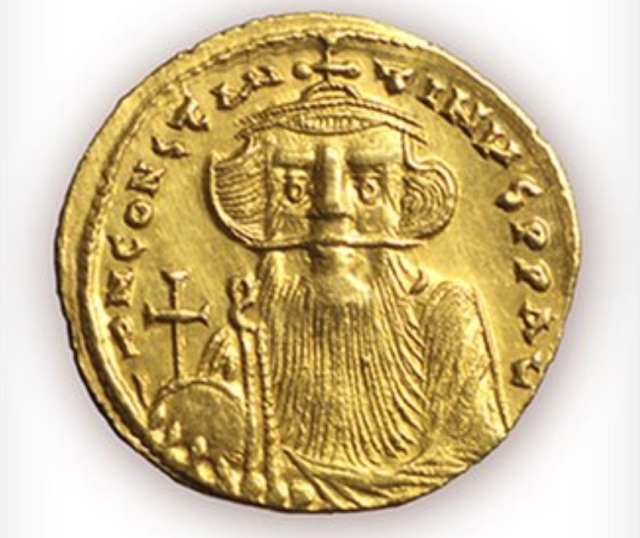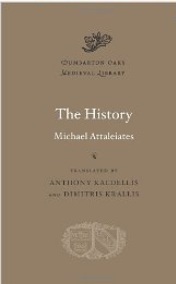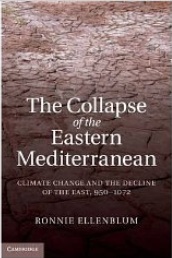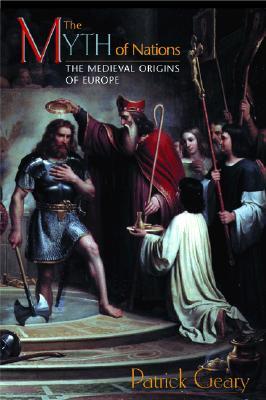Wow, I really have been neglectful of the blog this term. I haven’t abandoned it, but it was the last fall term of my MA degree, which means I was busy with Ph.D. applications, grant applications, writing, and finishing up the last of my coursework. This upcoming term promises more of the same minus the applications: I hope to finish writing by the end of January, revise in February, and defend in March. My supervisor is on sabbatical this year, and he may be back in March and then not again until the summer, so I should take advantage of when he’s around. A big part of my desire to be done the thesis early is that I want to prepare it for publication, and because I want to be properly prepared to start my next degree. I’m not terribly worried about the publication aspect: it’ll be time-consuming but the research is largely done and the writing will mostly be a case of compression. Preparation for the next degree (and I’m not saying Ph.D. here because my backup plan is an MA in medieval history should the admissions/funding not line up) will entail getting some more experience reading French and German, sharpening up my Greek, and reading, reading, and some more reading. My proposed topic will entail a detailed understanding of both Greek and Arabic historiography, and a particularly acute knowledge of Byzantine literary culture in the tenth century as well as the political and military history of the Hamdanid dynasty of Aleppo, something I know next to nothing about. While I’ve read a lot on Byzantium, most of this concentrates on ca. 300-700 AD and 1000- 1150 AD. It’s not that I do not find the tenth century interesting, but merely that I have not yet had a chance to read much on it as I’ve been distracted by the other times. I hope that during this upcoming term I’ll be able to get through the main 9-10th c. regnal studies. I read Runciman’s Romanus Lecapenus and his Reign last week. In Ottawa I will have to make sure I get through Tougher’s The Reign of Leo VI and Holmes’ Basil II and the Governance of Empire since the library has them and they’re too expensive to buy at this point. I doubt I’ll manage to read Tobias and Constantelos’ Basil I, Founder of the Macedonian Dynasty due to unavailability, and I’m similarly unsure of Toynbee’s Constantine Porphyrogennetos and His World.
Still, I will not be short of things to read. In book news, a retired professor of Byzantine history sold me his academic library at the end of the summer. I acquired about 200 volumes in this acquisition, including many older and rare books. My shelves are bursting and books now live in vertical stacks on the floor, and this isn’t including the hundred or so volumes I still have back in Ottawa. While one would think such a surfeit of material would have slowed my book buying pace, it really has not. Since the beginning of the fall term (and this including the library purchase) I added the following volumes, in no particular bibliographic format since a quick internet search can turn it all up:
Agnellus, The Book of Pontiffs of the Church of Ravenna. Trans. D. Deliyannis.
Barber, The Two Cities: Medieval Europe 1050-1320.
Bowersock, G. The Throne of Adulis: Red Sea Wars on the Eve of Islam.
Dagron, G. Emperor and Priest: The Imperial Office in Byzantium.
Halson, J. The State and the Tributary Mode of Production.
Halsall, G. Warfare and Society in the Barbarian West, 450-900.
Humphries, R. Mu’awiya Ibn Abi Sufyan: From Arabia to Empire.
Little, L. (ed.). Plague and the End of Antiquity: The Pandemic of 541-750.
Liudprand of Cremona, The Complete Works. Trans. P. Squatriti.
Maximus the Confessor, Selected Writings. Trans. G. Berthold
Nicol, D. The Last Centuries of Byzantium, 1261-1453.
Niketas Choniates, O City of Byzantium. Trans. H. Magoulias.
Noble, T. The Republic of St. Peter: The Birth of the Papal State, 680-825.
The Patria: Accounts of Medieval Constantinople. Trans. A. Berger.
Richer of St. Remi, Histories. (2 vols.) Trans.J.Lake
Robinson, C. Islamic Historiography.
Runciman, S. The Emperor Romanus Lecapenus and His Reign.
Vasiliev, A. The Russian Attack on Constantinople in 860.
Wilson, N. Scholars of Byzantium.
Also added to the shelves at this time were four volumes of Dumbarton Oaks Papers, one Speculum, one Millennium: Jahrbuch zu Kultur und Geschichte der ersten Jahrtausend N. Chr., and one Journal of Late Antiquity. This is pretty much the end of book buying for the time being, however. Not only do I have a huge reading backlog, my new accommodation in Ottawa is far more expensive than the hellhole I was living in previously, and thus the funds are more limited. 2013 has been a record year for library building, but 2014 is likely to be much slower since I have nowhere else to put the books and since I have no idea where I’ll be headed in the fall for the next degree. Wherever it is, though, it’ll be much farther than a 500-volume academic library can travel (and that’s not including including my classics, methodological, or later medieval stuff.)
So, what do I do with all these books? Well, I read them, but the reason I own them is for convenient reference. I prefer to work at home, and having an available library is a great blessing. I also try to pick up as many translations of primary sources as possible: having the actual texts is nice but since a volume of the Corpus Fontium Historiae Byzantinae (which is by no means complete) tends to run in the $200 range I just cannot afford them, nor would I want to unless it was of a text I was working closely with. One can find the Corpus Scriptorum Historiae Byzantinae online for free, although it is not entirely free from issue since even by the standards of nearly two centuries ago the editor was considered overly sloppy. However, I do have access to the Thesaurus Linguae Graecae digitally via my university library, and it has most of the CFHB texts I’ve needed up to now. As a digital tool it’s wonderful: a complete database of many Greek texts from antiquity to the fall of Byzantium. It seems a bit weak when it comes to hagiography, but the terminological search tools are an absolute godsend since I often have to deal with Byzantine Greek and yet have to rely on classical lexica and grammatical tools. The ability to search out terms in Byzantine texts, instantly, makes this resource so powerful. My entire MA thesis is based upon it, and would have required hundreds of extra hours without it.
Anyhow, back to the question. What do I actually do with the books? As references, the indices are helpful but rarely sufficient for anything other than a quick and dirty check. I constantly (and metaphorically) look over my shoulder when I pull something out of the index of a book I haven’t read, since the danger of twisting the author’s intentions is very present. If possible, reading the book, or at least several chapters in which the author’s intentions are made clear is desirable. Following along the lines of Curt Emanuel and Jonathan Jarrett, I will briefly describe how I go about reading these books. First, I take notes. This process can be very laborious, since I typically want the notes to be something I am able to skim in a few minutes and get a complete summary of the book, chapter by chapter. Depending on my knowledge of the subject and materials, the amount of writing that I do varies greatly: two of the books I read in December illustrate the different approaches. To Peter Frankopan’s The First Crusade: The Call from the East I took rather skeletal notes on the “what” aspect. I know the materials that he is using, the main actors, and the main story. What I am interested in is his argument and how he uses the material. On the other hand, Paul Stephenson’s Byzantium’s Balkan Frontier, 900-1200 was something I had only the faintest outline of. Thus my notes for the earlier portion of the book are very full, whereas later on when it enters the Komnenian age where I’m familiar with the main sources and the story, I’m more interested in how he’s using those materials. Despite Frankopan’s book being much more basic, I actually have more notes on a per-page basis. This is almost certainly attributed to the more notes to myself raising questions I had about his uses of the material, as well as my very specific interest in the construction of the Alexiad and Frankopan’s proposals in regards to how it is misrepresenting Alexios’ early years. Conversely, in Stephenson’s book, there were some longer sections on Serbia and Croatia that did not interest me that much, and so I took only some basic notes. I know where to go if I need more, but since I doubt I’ll be making much use of the information on those groups any time soon, the notes are just there to give a very general overview and point me back to the book.
The process does not end there. When I’m done with the book, sometimes I review it. I have a lengthy list of reviews on Amazon, although it’s out of date. This is largely due to having published my first reviews in academic journals. Where I used to spend a few hours I now spend a few days preparing a detailed review. I’ve read too many awful ones by real scholars that do little more than say what the book was about and that it’s good. Considering that the one can usually glean such information from the dust jacket, contents, and index, and then just say it’s good anyway, I expect more. I find writing reviews to be immensely useful for me, and I hope they’re helpful for others. However, the last three were such large tasks that I no longer give every book that treatment.
Some 2-4 weeks after I put the book back on the shelf, I type my notes. The delay period is designed to allow me to forget. Thus not only do I get a refresher as I type, without the material fresh in my mind I have the opportunity to see if my notes make sense. If they don’t make sense two weeks later, they certainly won’t two years later, and this is the opportunity to clear up any issues. Usually when something doesn’t make sense I can then go to the book and it all starts flooding back, making the fix minor. Finally, I categorize sections of the notes. While I write my notes, I leave keywords in the margin, regardless of how relevant they are to the main theme of the book. These keywords form text file headings on my computer, so it’s quick and easy to just open up the folder that contains these files and look up “Constantinople, physical infrastructure of” if that’s what I’m looking for. It makes research and referencing a breeze because I then have complete book notes and thematic keyword categories from almost everything I have read: notes for the Google generation. However, I have not always followed this system and I have several binders of notes that have yet to be added. Hopefully I’ll get to them this spring once I am done with the MA thesis. Nor do I have notes good notes for everything I read. At one point, I apparently thought that I did not need page numbers, so I have a few books with little more than synopses. Fortunately, those are mostly general works that I read a long time ago. I also don’t tend to type up notes from articles from my current research unless they’re rather important or have information I wish to add to the thematic categories, since I’m unlikely to ever return to late antique military history. This is on a case-by-case basis: for example, in my last paper on dissent and competition as expressed between elite and imperial art in the Byzantine and Umayyad worlds, a great number of the articles were very short and they’re all in my notebook in one spot. Since they’re basically everything I know about Umayyad art, I know where to find them. Should I return to the topic one day, I may have to digitalize them.












